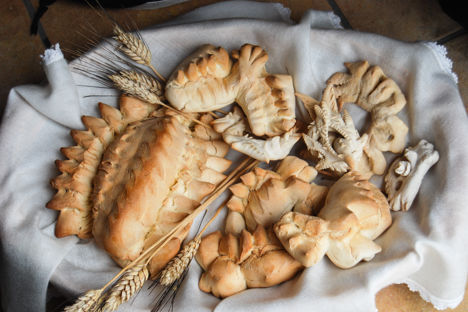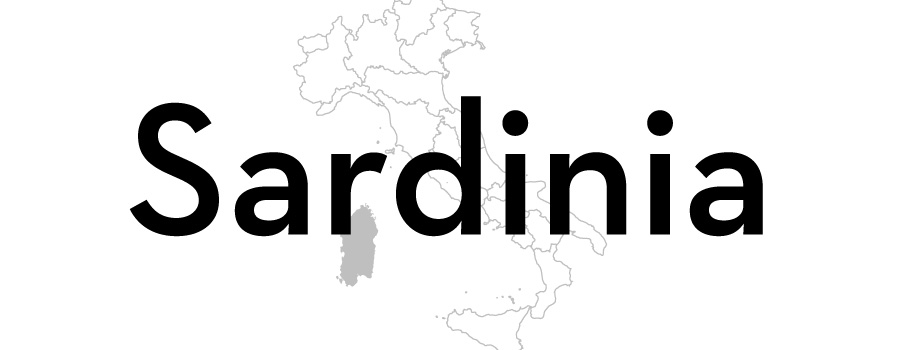
The breads of Sardinia
Sardinia is an island famous for its bread, with hundreds of different varieties baked for daily consumption or religious occasions. Here are some of the most celebrated varieties and the reason why Sardinian bakers are the best in Italy.
The breads of Sardinia
Sardinia is an island famous for its bread, with hundreds of different varieties baked for daily consumption or religious occasions. Here are some of the most celebrated varieties and the reason why Sardinian bakers are the best in Italy.
A piece of bread, some good cheese and a few glasses of wine – it’s a simple dinner which encapsulates what a lot of us love about Italy. In Sardinia, they take this simple ritual to the next level, with hundreds of cheeses and just as many breads to pair together. As an island with a strong shepherding tradition, many Sardinian breads were created to be taken on long journeys, which is why so many of them are completely dry and crisp, very light to carry, and will remain good to eat for months after being baked. That said, there are also fresher, softer, more familiar varieties, some of which are rustic and simple in appearance; others are carved and shaped into intricate shapes for religious festivals (particularly Easter).
The reason Sardinia is home to so many different varieties of bread is thanks to the incredible durum wheat found on the island. Regarded as the best in all of Italy thanks to the quality of the water and fertile land (particularly around Trexenta), Sardinian bakers have been using the local crop for thousands of years to make bread that to this day is in high demand throughout the rest of the country (the Romans exported Sardinian wheat to the rest of the empire due to its high quality). In the home, many families use the same ‘mother’ yeast passed down through the generations, feeding it daily with flour and water, which provides plenty of flavour.
It would be impossible to list all the breads made across Sardinia in one article, but the six listed below are among some of the most celebrated. If you’re visiting the island, these are the ones to look out for.
Pane carasau
By far Sardinia’s most famous bread, pane carasau is an incredibly thin flatbread. It’s made by cooking a thin sheet of dough (made from durum wheat) in a very hot oven until it inflates and rises; the bread is then halved leaving the baker with two very thin sheets of crisp bread. It’s an ancient recipe, created for shepherds who were away from home for months at a time, and forms the basis of many different Sardinian dishes (such as pane frattau). A similar yet even thinner bread is called carta di musica, made from semolina flour which is so thin it is translucent. This name is what most Italians on the mainland call pane carasau.
Pistoccu
Hailing from Ogliastra on the eastern part of the island, pistoccu is another crisp flatbread designed for shepherds, although it is thicker than pane carasau. It is usually formed into a circle or a rectangle, and occasionally has cooked potato kneaded into the dough. It’s made in the same way as pane carasau – with a larger loaf split in half to create two thinner pieces of bread – before being baked again until crisp. It’s generally eaten with olive oil or quickly dipped in water, which ‘rehydrates’ the bread and makes it soft and pliable.
Pane coccoi
A bread baked for weddings, festivals or religious occasions, pane coccoi is instantly recognisable thanks to the jagged edges and spikes covering the top, which are made with scissors, knives and fluted wheels. The dough also includes whole eggs still in their shell during Easter. You’ll often find pane coccoi shaped into various figures and symbols, each with their own name. The most common include fish, birds, roses, crosses, stick figures and wreaths.
Spianata
This is the name given to bread which is baked for making pane carasau and carta di musica. However, instead of being split and baked again to make ultra-thin crispy sheets, it is left whole. It is still thin but remains soft in the centre. It’s often used to create sandwiches or topped with other ingredients similar to pizza.
Pane civraxiu
This is a larger loaf of bread that’s originally from the southern part of Sardinia, although today it is baked all over the island. It’s often made and baked at home, with a hard, dark crust and soft crumb inside. Rustic and simple, it’s often sliced to become bruschetta or simply enjoyed with some cheese and a glass of wine.
Moddizzosu
Most associated with Campidano, in the southwest of Sardinia, moddizzosu is similar in looks to pane civraxiu but has a softer crust and denser crumb. It also includes potatoes in the dough and, at certain times of the year, lard. These are much bigger loaves than you’d normally come across, and traditionally weighed up to ten kilograms per loaf.



